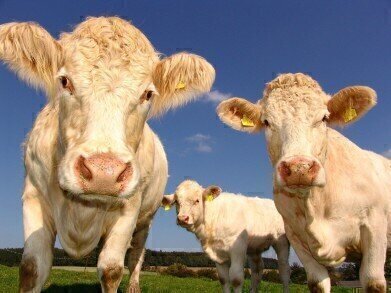Water/Wastewater
How Much Water Does Farming Use?
Mar 04 2021
Farming is, without a doubt, the most water intensive industry on the planet. Over two-thirds (71%) of all freshwater sources on the Earth are used for agricultural purposes, with dairy and livestock farms particularly demanding. In hot weather, for example, a single cow can require as many as 170 litres of water per day. Even average temperatures can necessitate the daily use of upwards of 100 litres per cow.
Meanwhile, the milk parlour also requires plentiful use of water in order to maintain hygiene standards and produce dairy goods. It’s estimated that this part of the process uses around 70 litres per cow per day, as well. That adds up to a whole lot of water consumption – and that’s only for those farms where cows are present. Other animals require slightly less but still substantial amounts of H2O, while crop farms can also consume a significant amount of water through irrigation.
Average water consumption on farms
Rearing livestock is a massive drain on the most precious resource our planet has to offer – water. Indeed, the water-agriculture interface is so complex and so crucial to the ongoing health of our environment that it’s no surprise agriculture is invariably in the conversation when it comes to reducing resource consumption and transitioning to more sustainable practices. This is nowhere more noticeable than on a livestock farm, where animals consume the following amounts of water on a daily basis:
|
ANIMAL |
LITRES OF WATER PER DAY |
|
Cattle |
|
|
Cow with calf |
50 |
|
Dairy cow in milk |
68-155 |
|
Yearling |
24-36 |
|
2-year-old cow |
36-50 |
|
Pigs |
|
|
Lactating sow |
18-23 |
|
Gestating sow/boar |
13-18 |
|
Fattening pig |
3-10 |
|
Weaner |
1-3 |
|
Poultry (per 1,000 birds) |
|
|
Broilers (1-4 weeks) |
50-250 |
|
Broilers (5-8 weeks) |
345-470 |
|
Laying fowl |
180-320 |
|
Pullets |
30-180 |
|
Sheep |
|
|
Ewe with lamb |
9-10.5 |
|
Pregnant ewe/ram |
4-6.5 |
As you can see, that’s a significant amount of water on a daily basis. Meanwhile, cereal farms and general croplands also require their share of water to ensure that plants are kept hydrated in periods of drought. While exact figures are harder to come by since variations between different purposes can be large, it’s estimated that outdoor field crops require some 200Mm3 on an annual basis, while edibles and ornamental can consume up to 25Mm3 per year.
Managing supplies
With global warming leading to unseasonably warm temperatures, the amount of water needed on farms is only likely to increase in the coming years – especially with the global population on the rise as well. At the same time, climate change is precipitating an increased number of extreme weather events, with droughts, heatwaves and freezes jeopardising water supplies.
With mitigation of those issues in mind, farmers are now required to conduct thorough monitoring of agricultural abstraction practices on their holdings. This will not only allow individual farmers to demonstrate their compliance with their abstraction licenses, but will also provide data that can inform the wider community on the availability of water sources going forwards.
Farmers are also encouraged to draw their water from several different sources in order to have workable contingency plans in place. For example, 85% of farms in Britain are connected to a mains water supply, but the possibility of interruptions to that supply mean that it’s advisable to investigate abstraction from streams, rivers and springs and boreholes as alternative means of water supply.
Digital Edition
IET 34.2 March 2024
April 2024
Gas Detection - Biogas batch fermentation system for laboratory use with automatic gas analysis in real time Water/Wastewater - Upcycling sensors for sustainable nature management - Prist...
View all digital editions
Events
Apr 30 2024 Melbourne, Australia
Apr 30 2024 Birmingham, UK
May 03 2024 Seoul, South Korea
May 05 2024 Seville, Spain
May 06 2024 Minneapolis, MN, USA


















